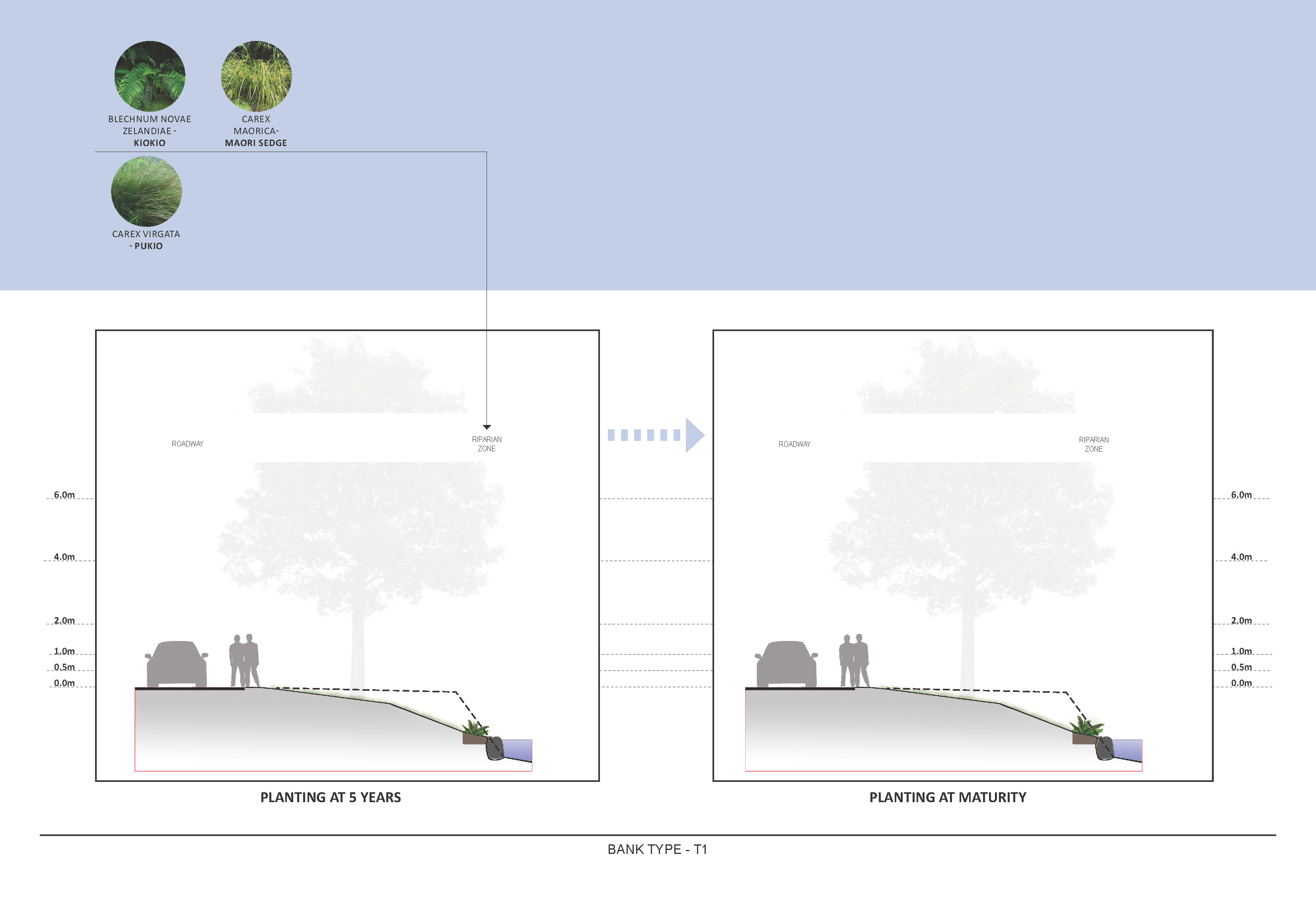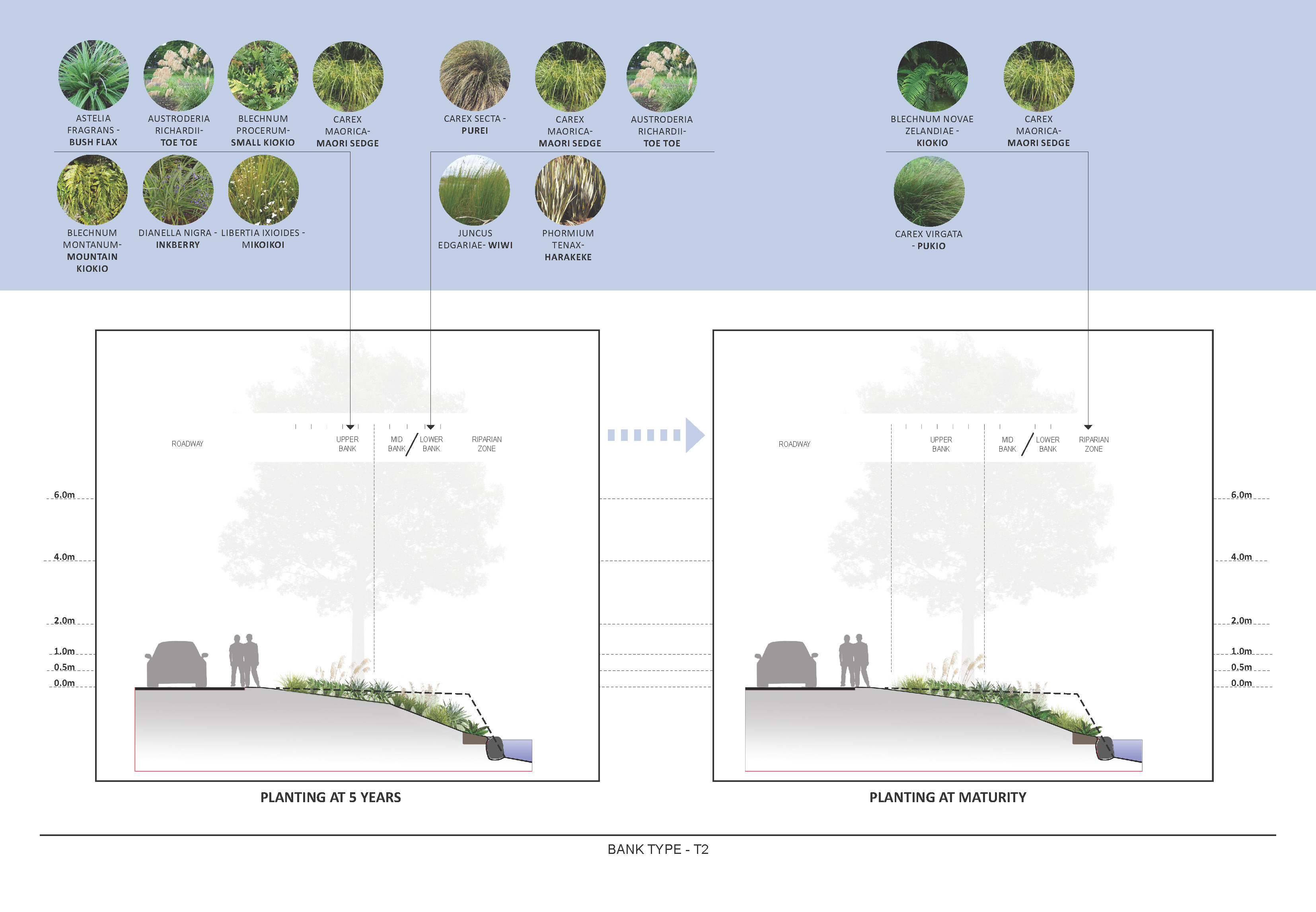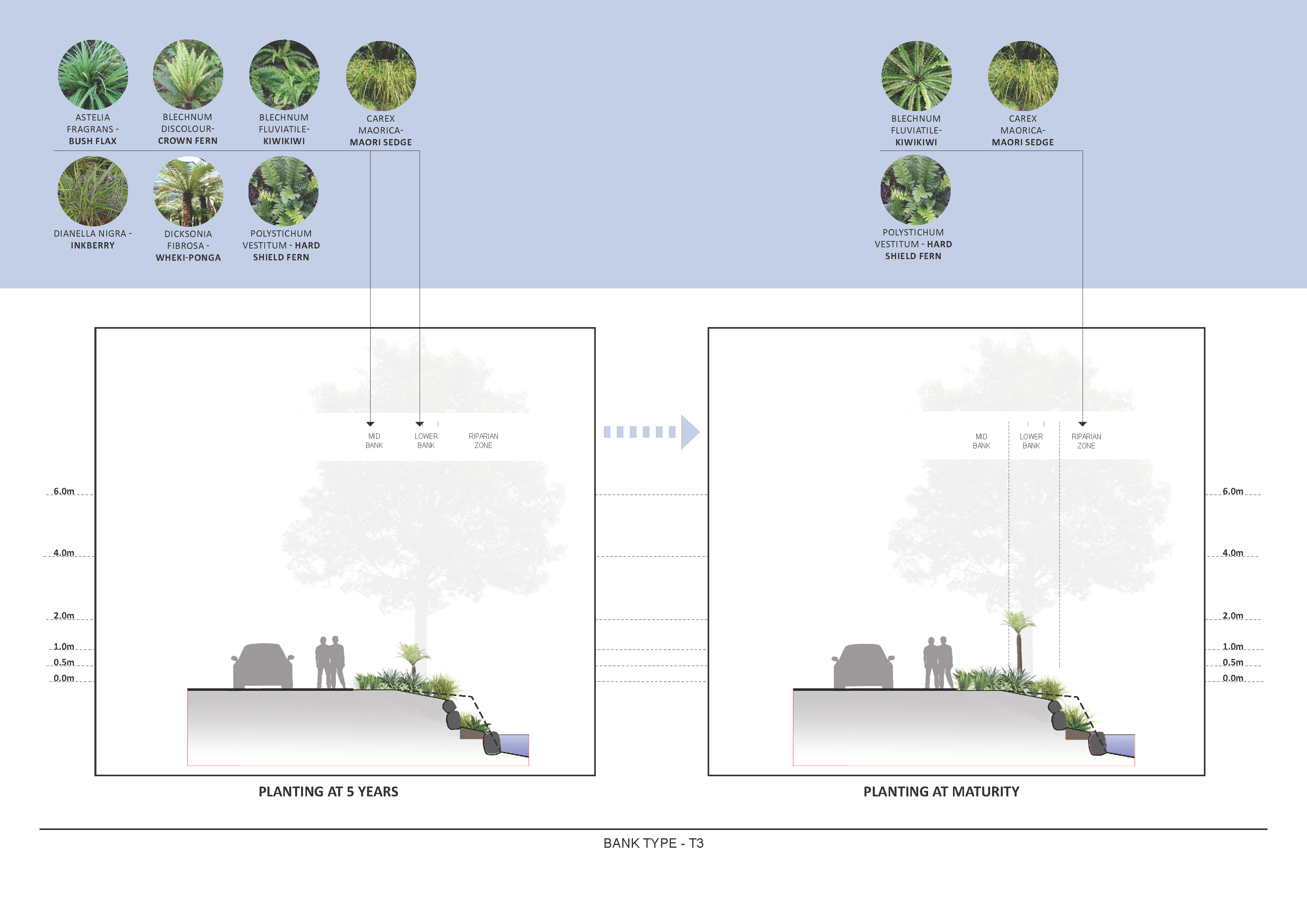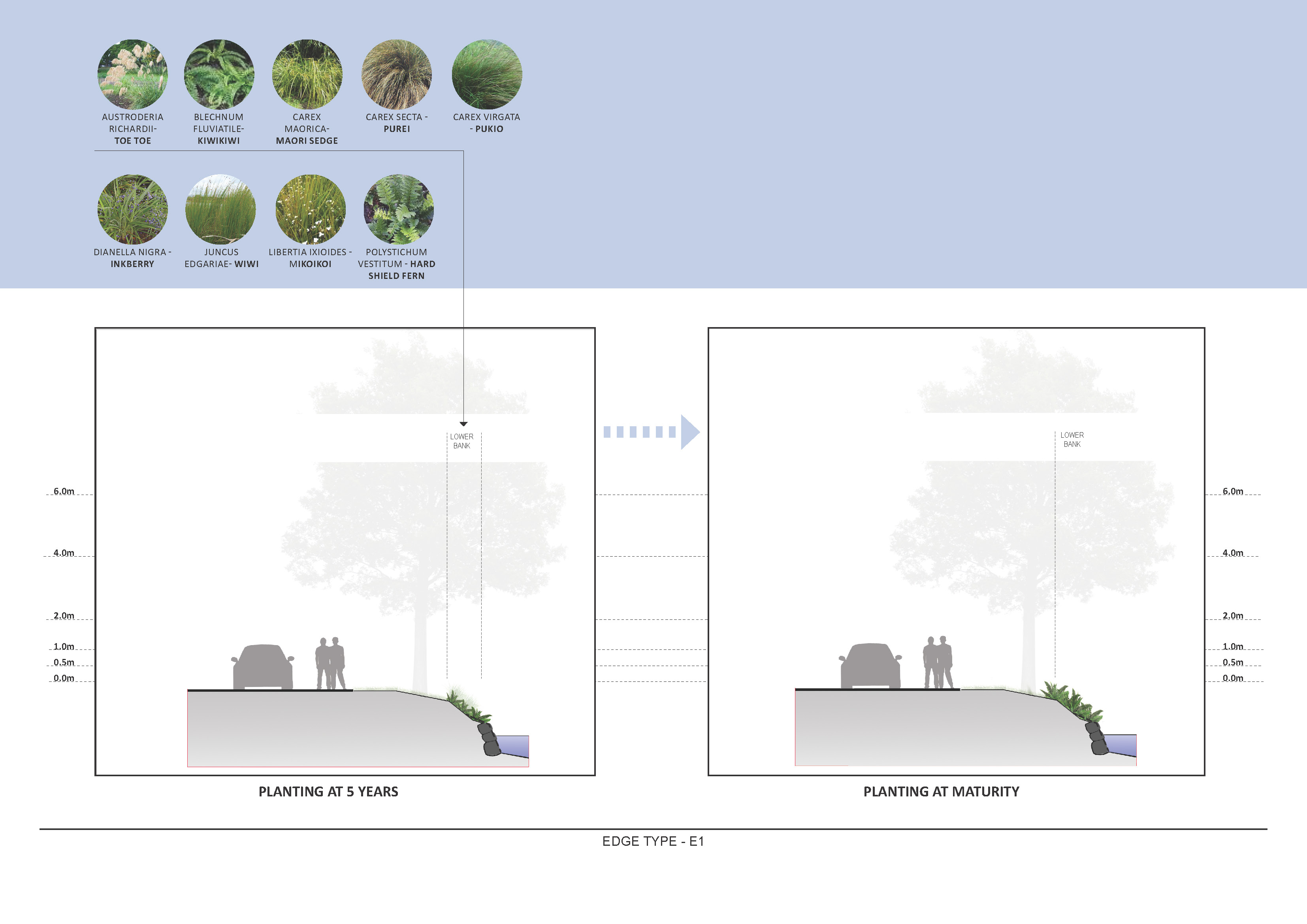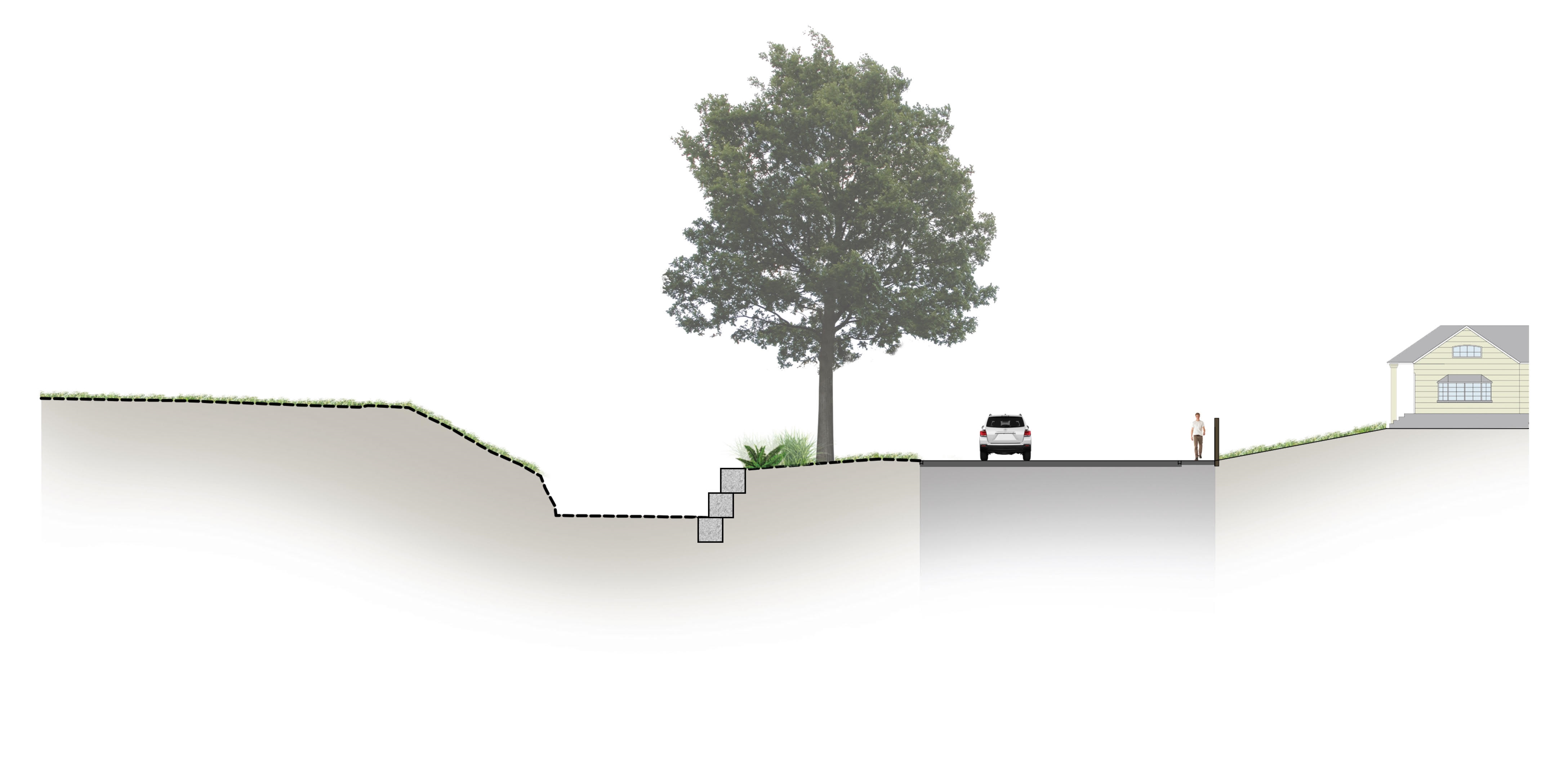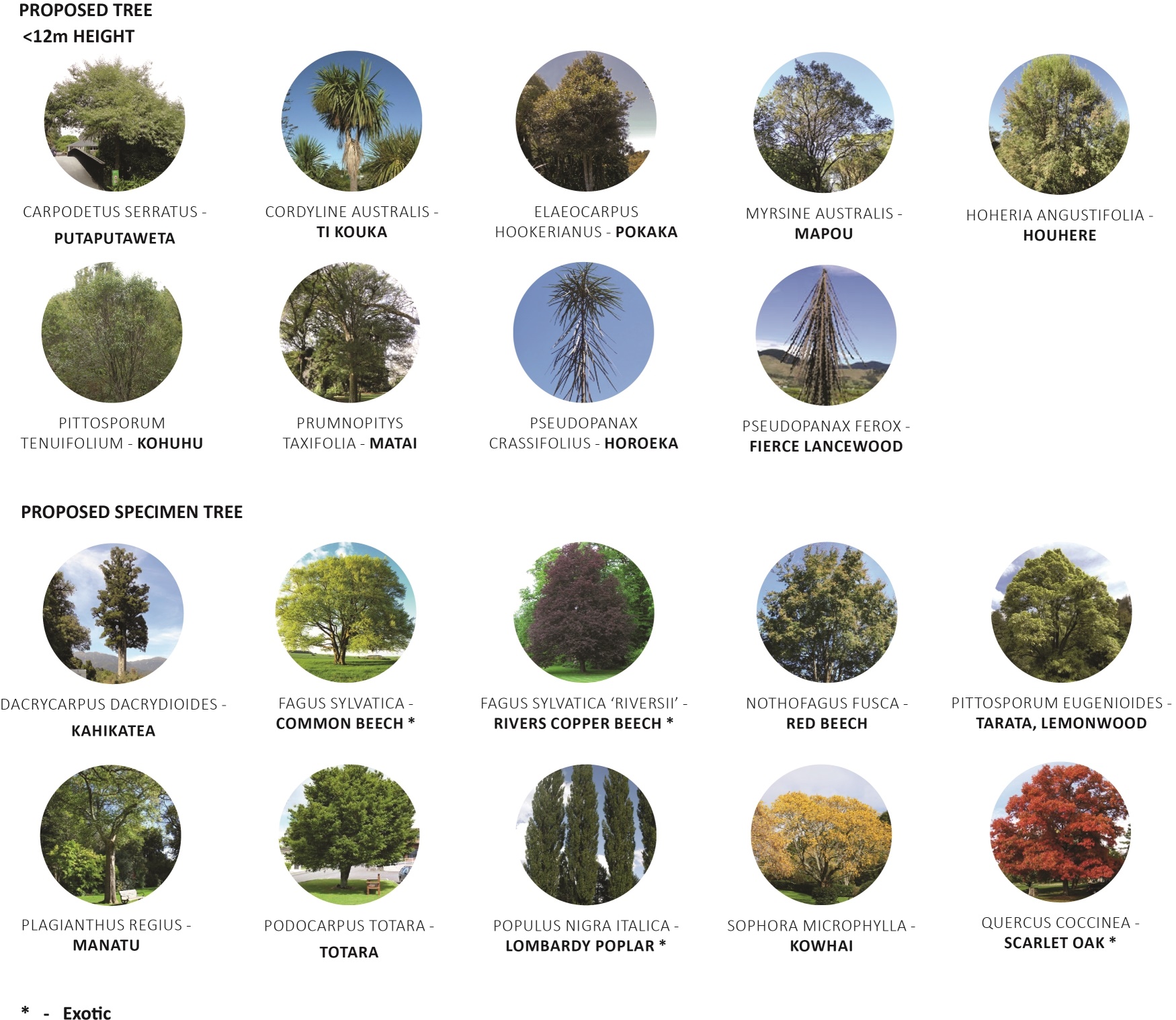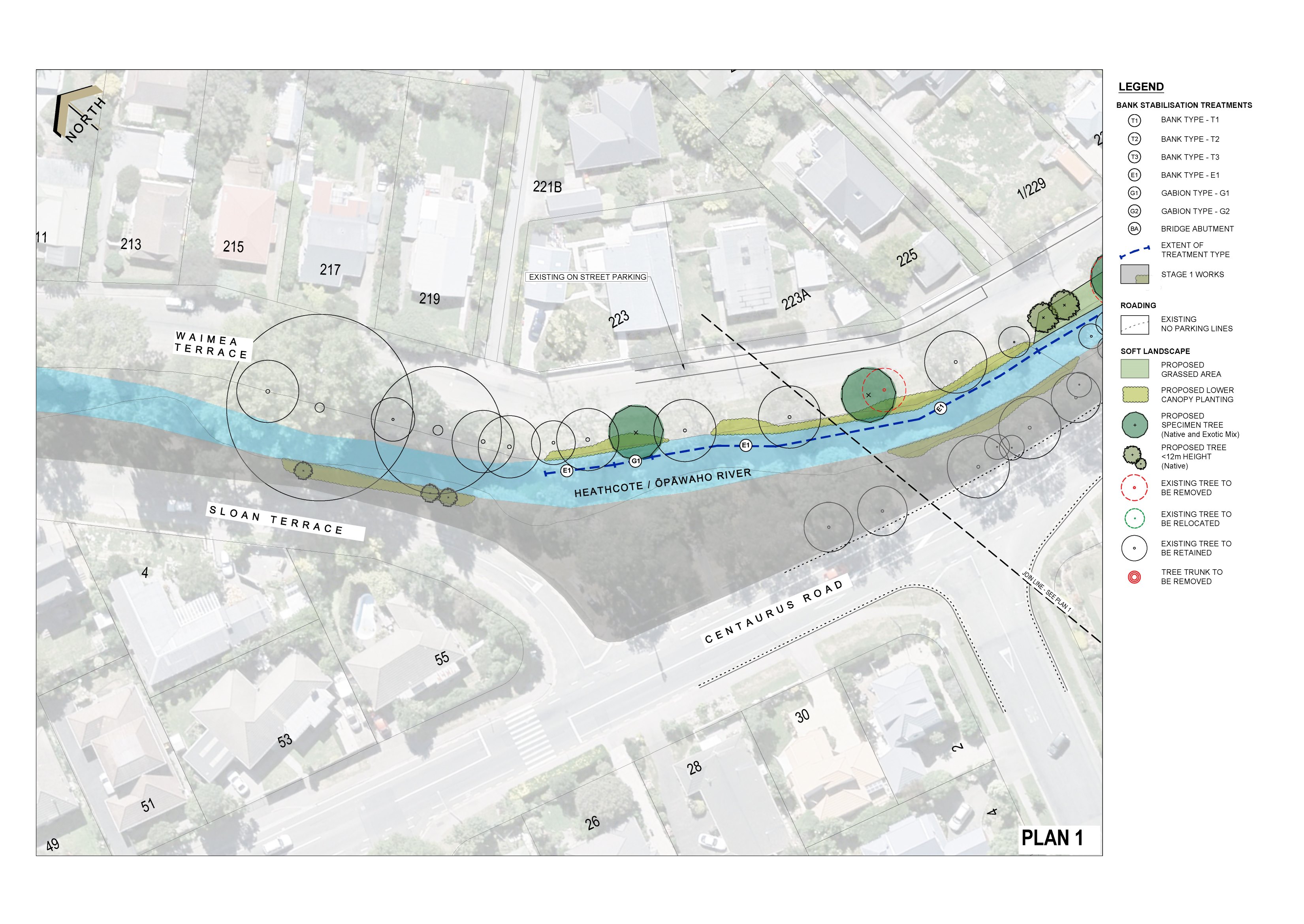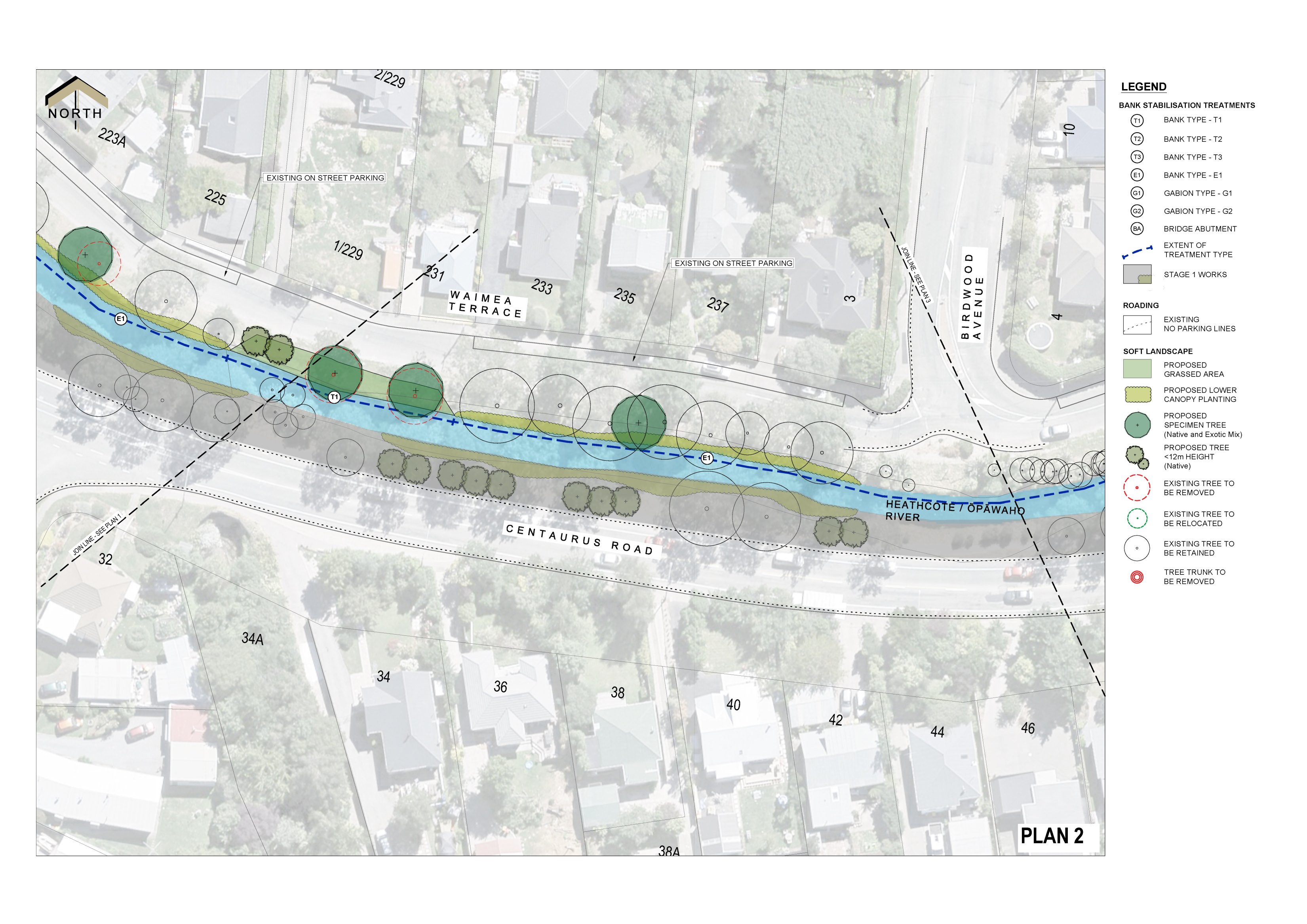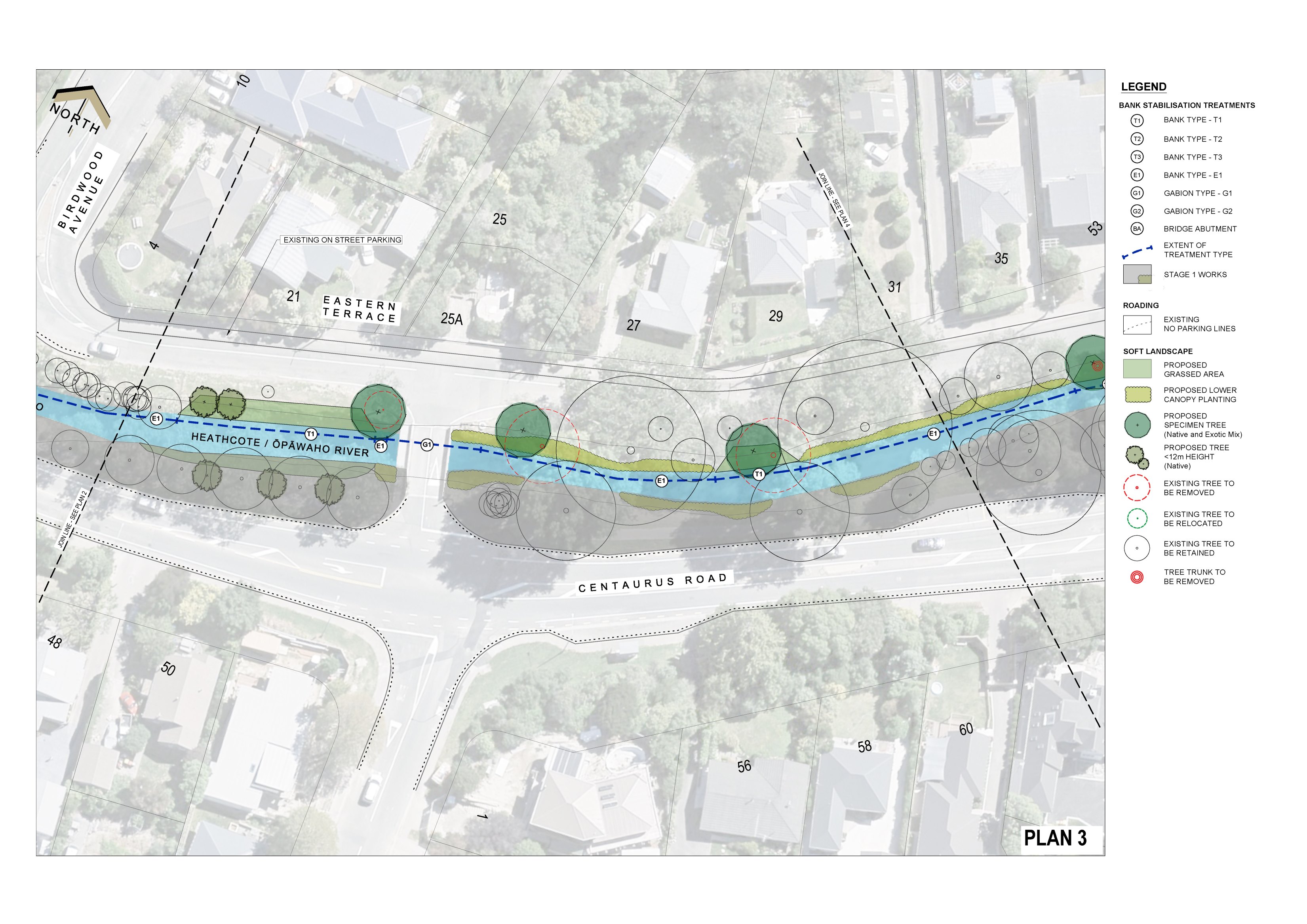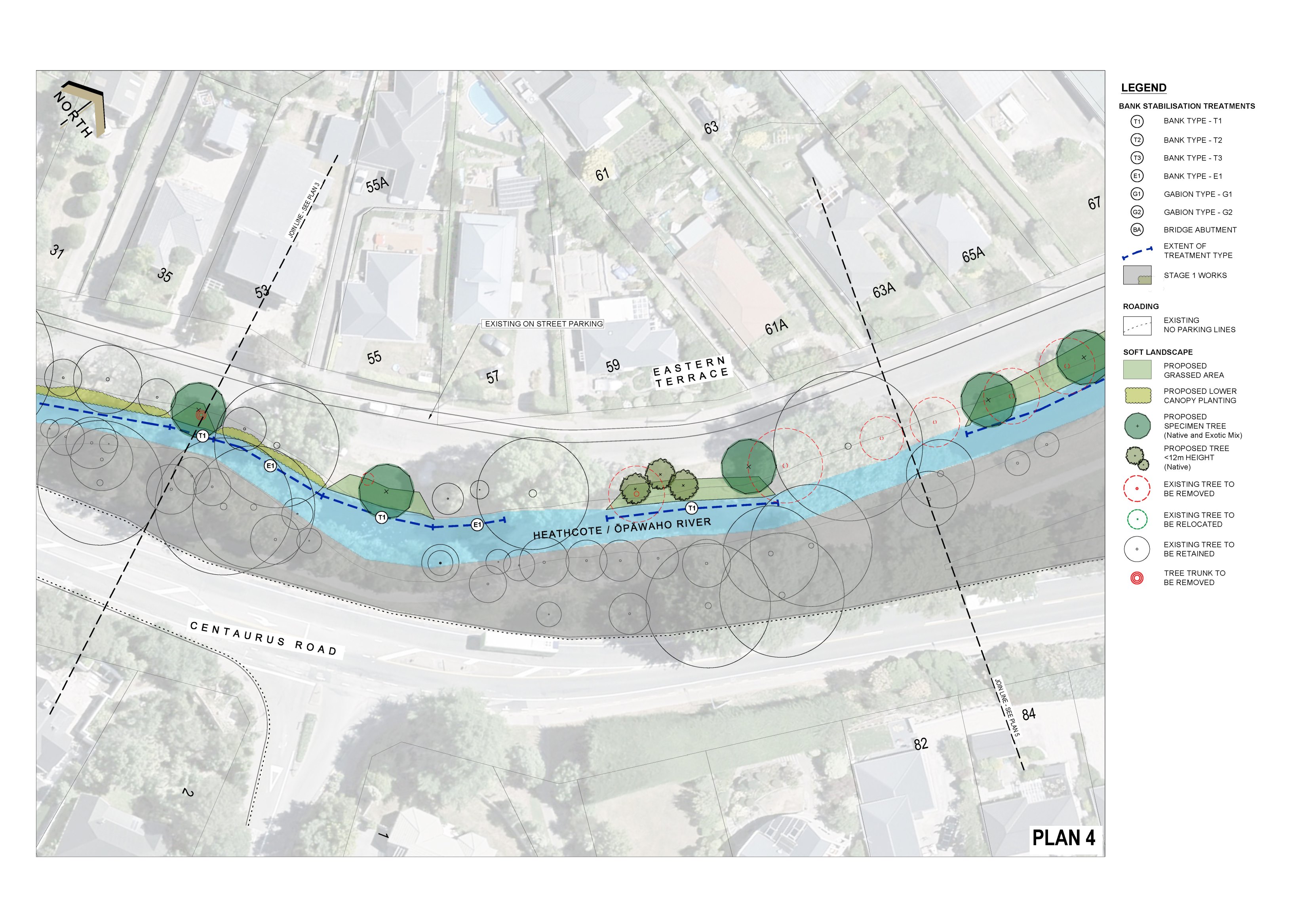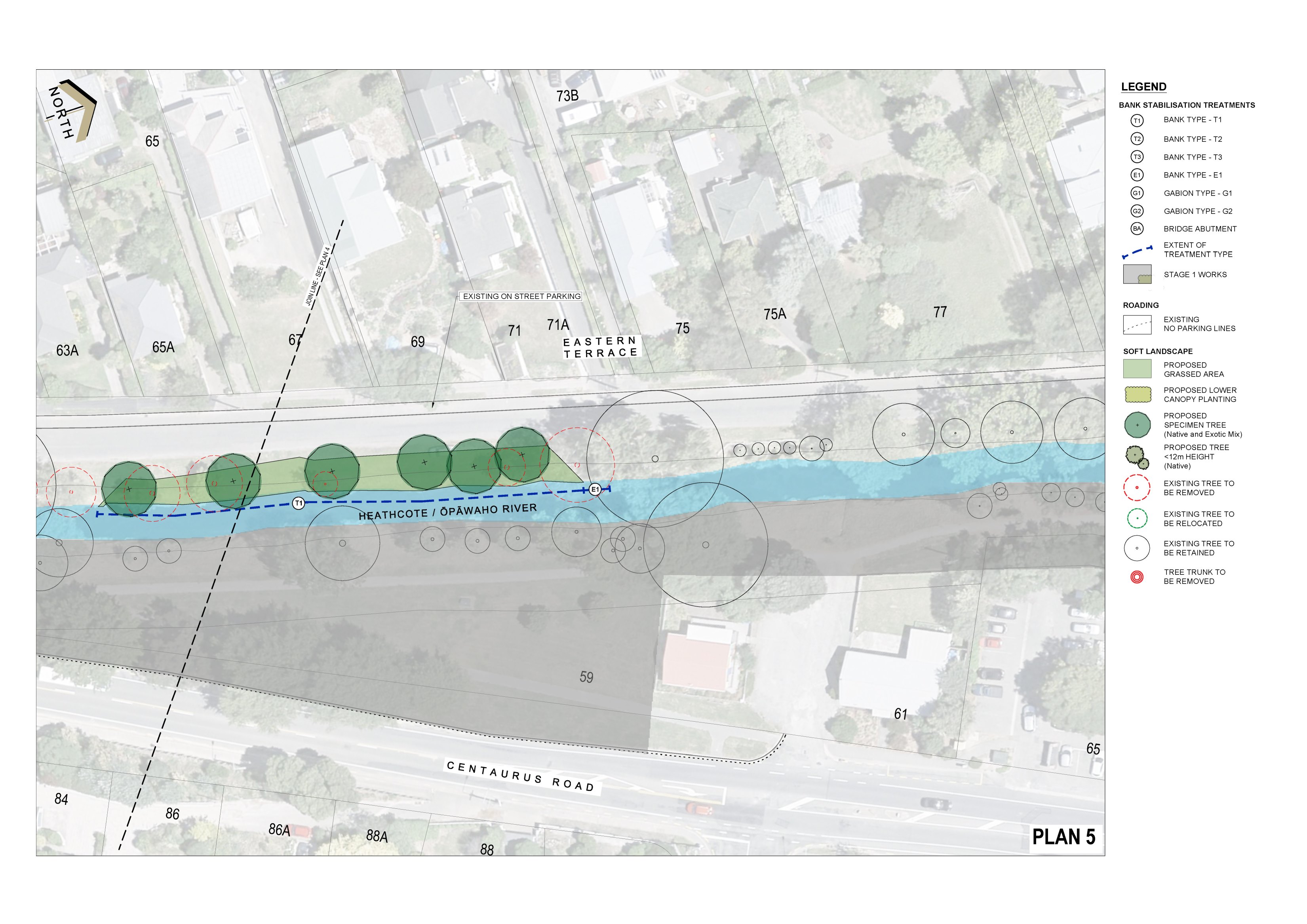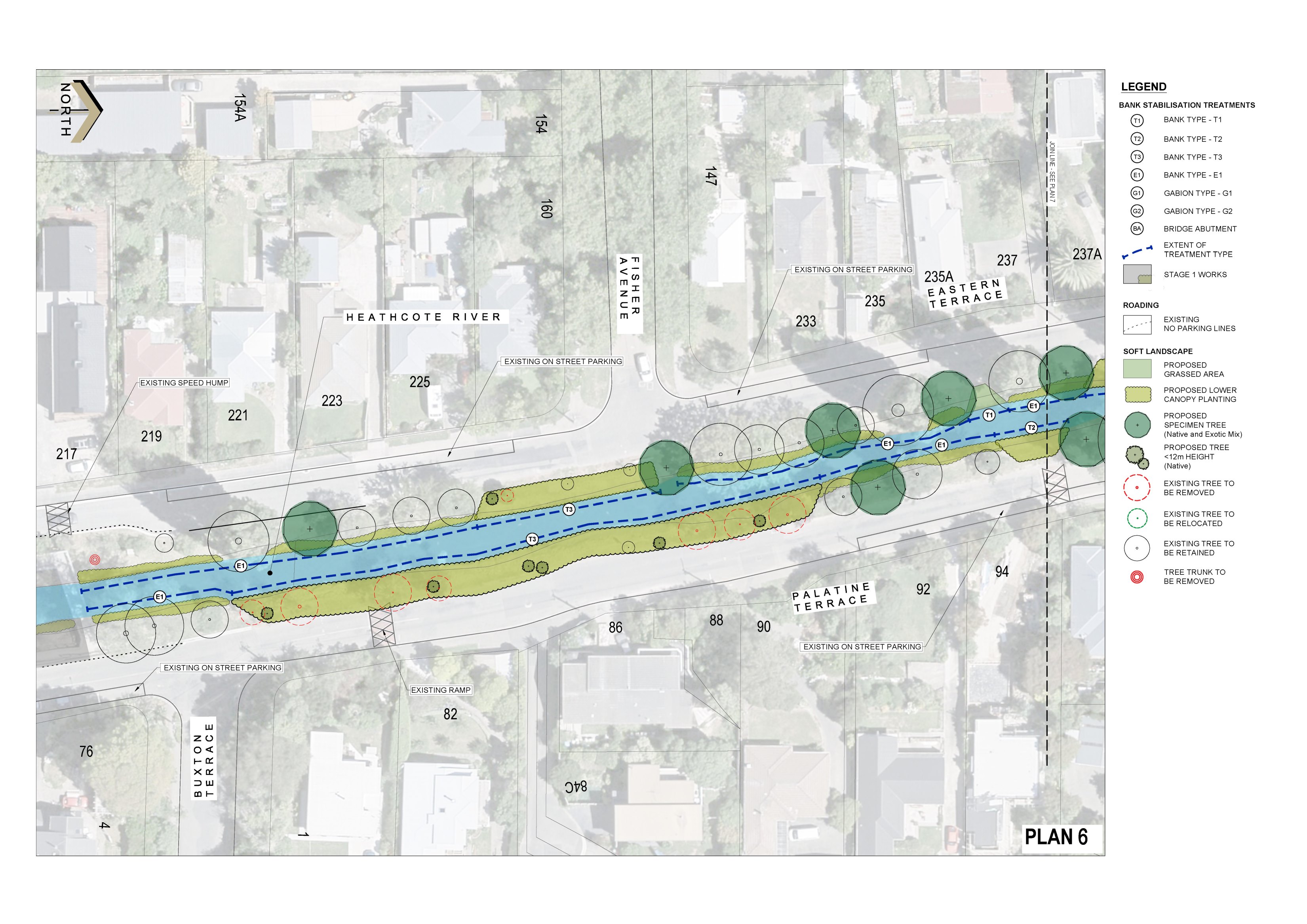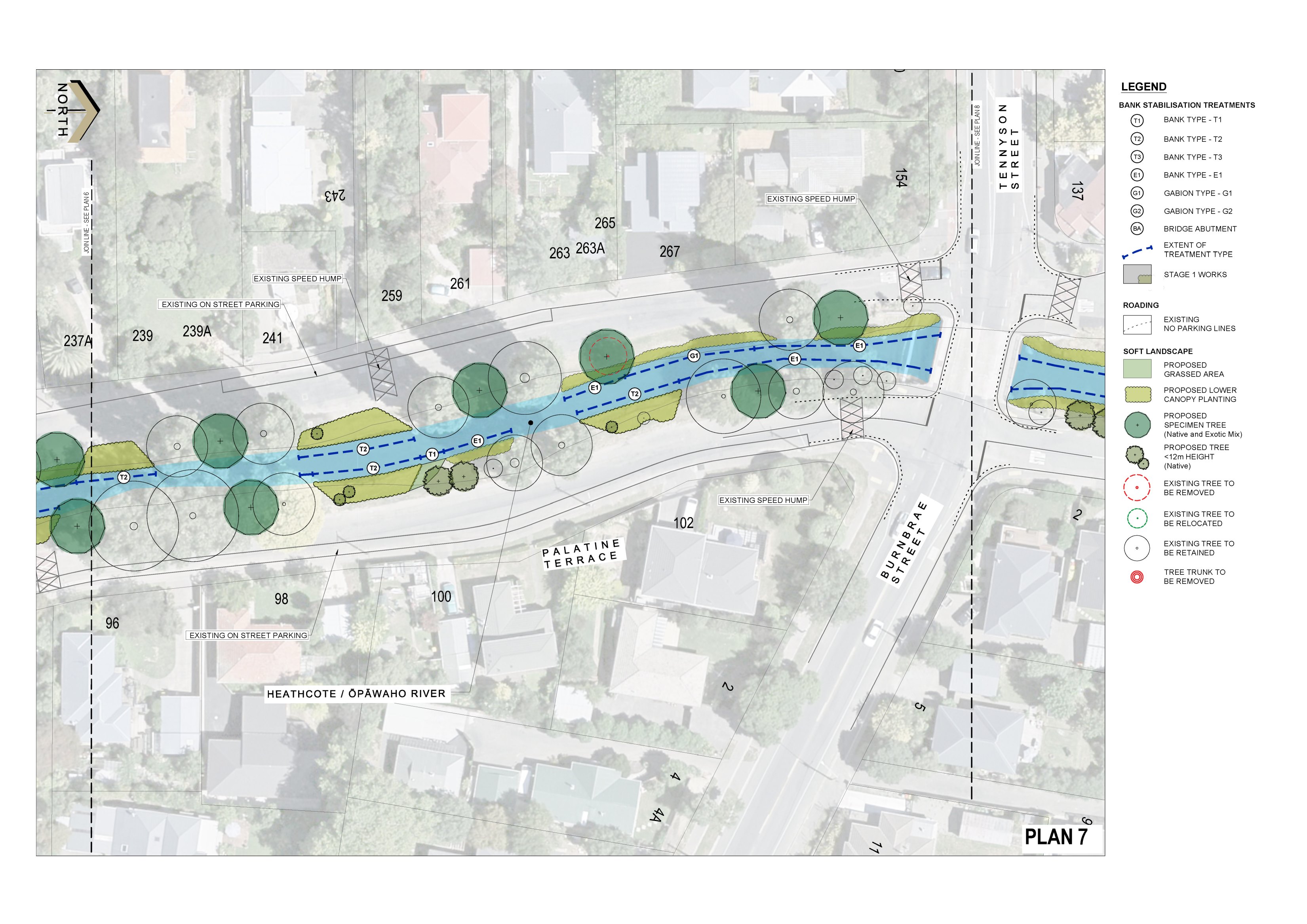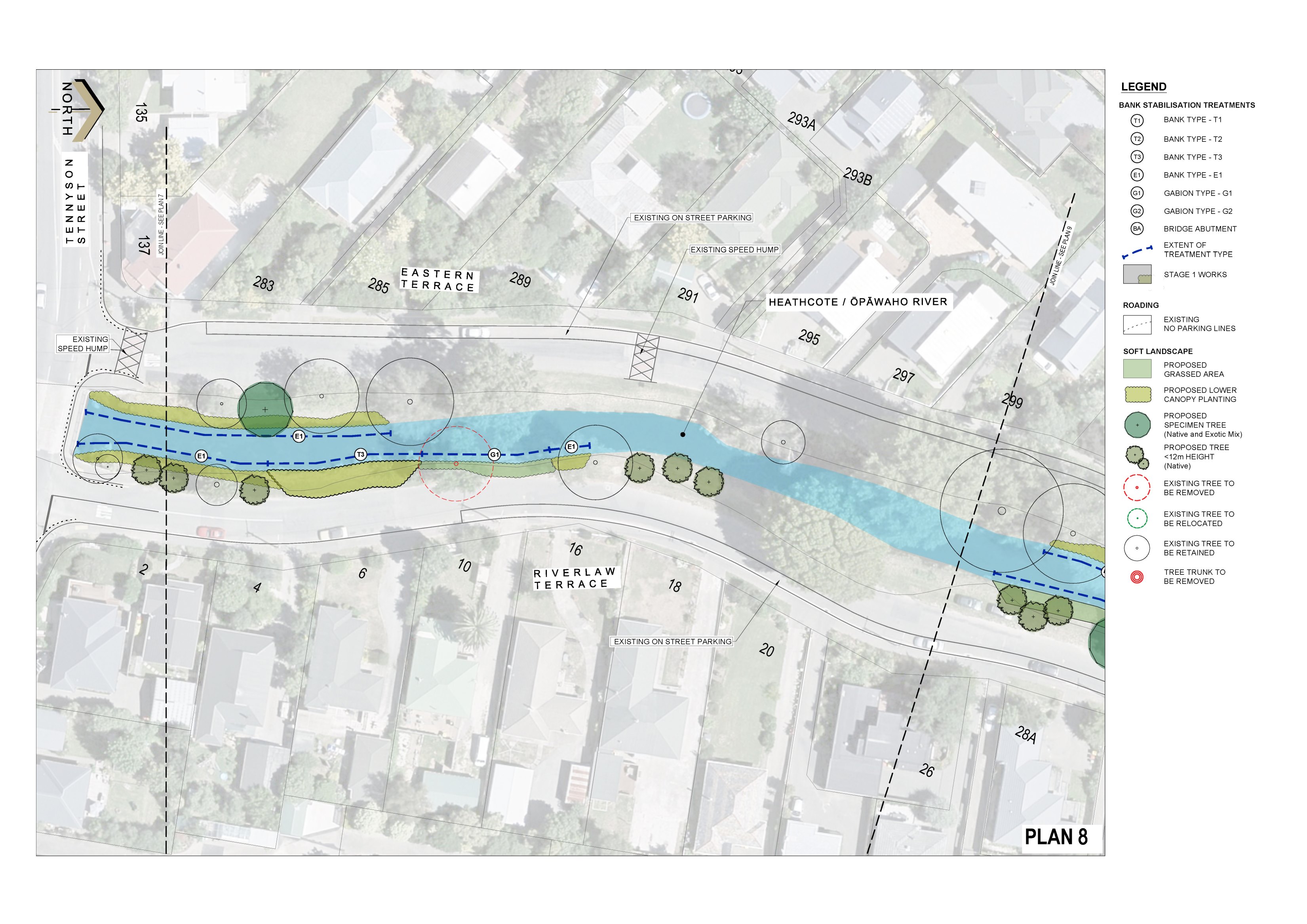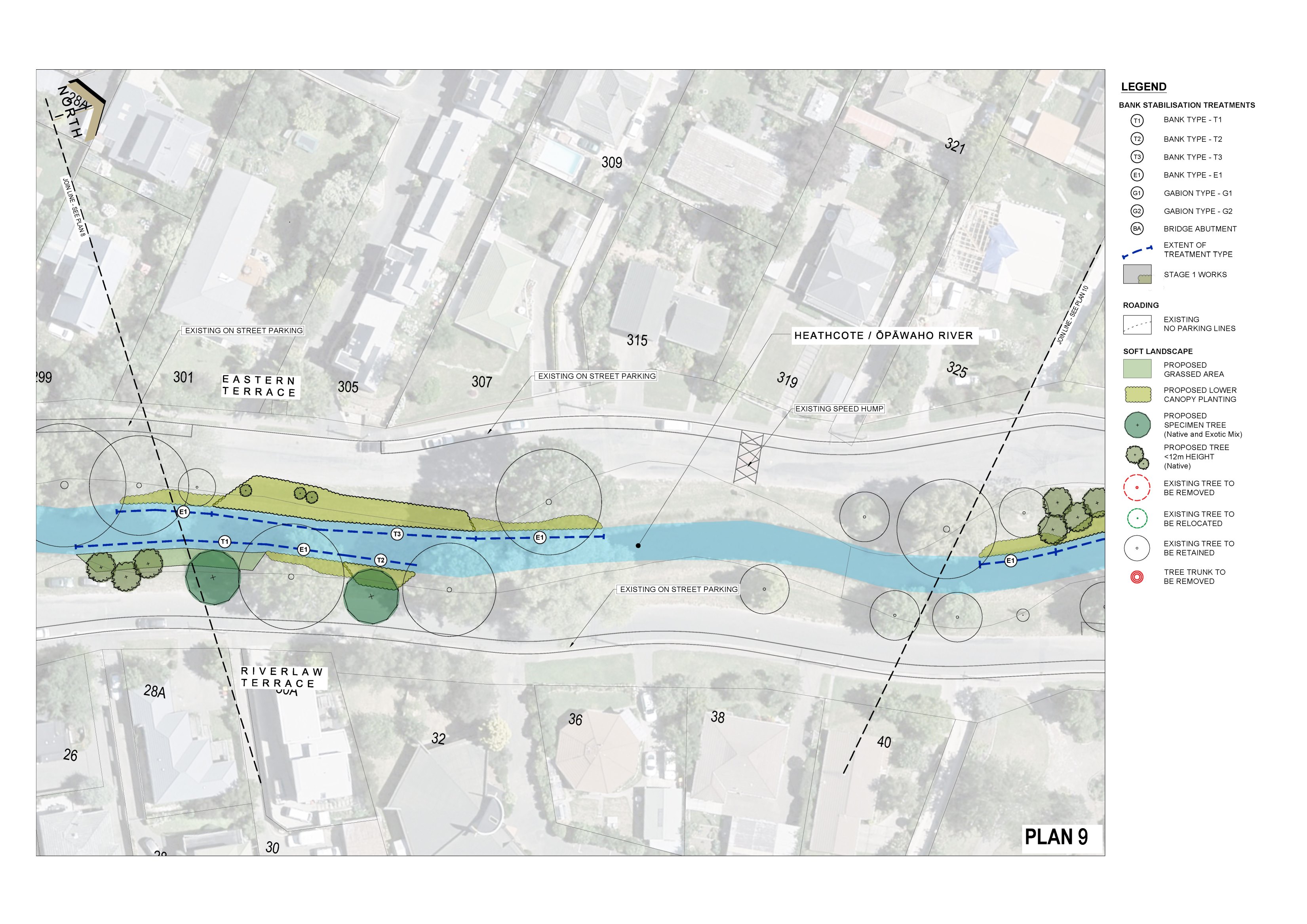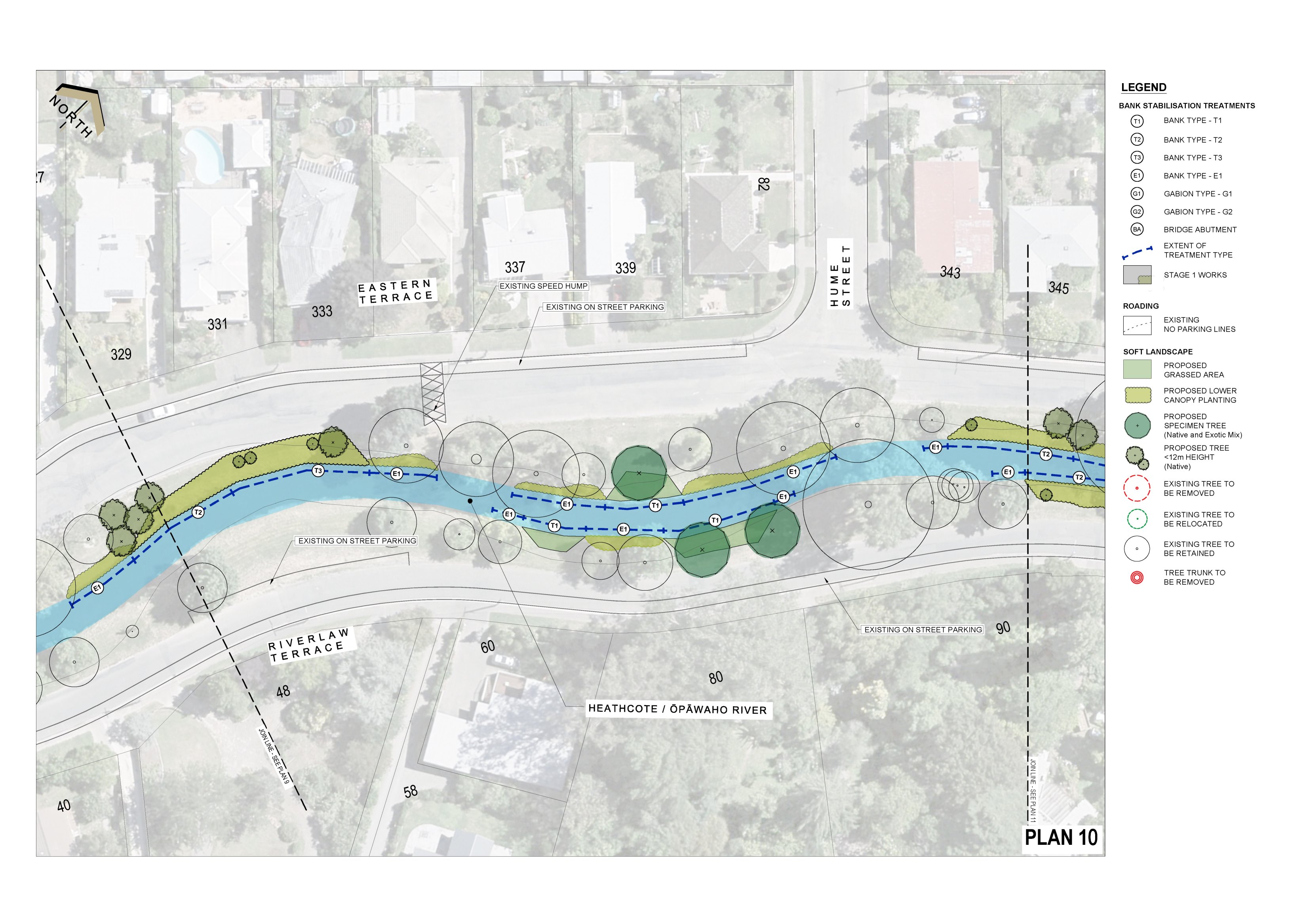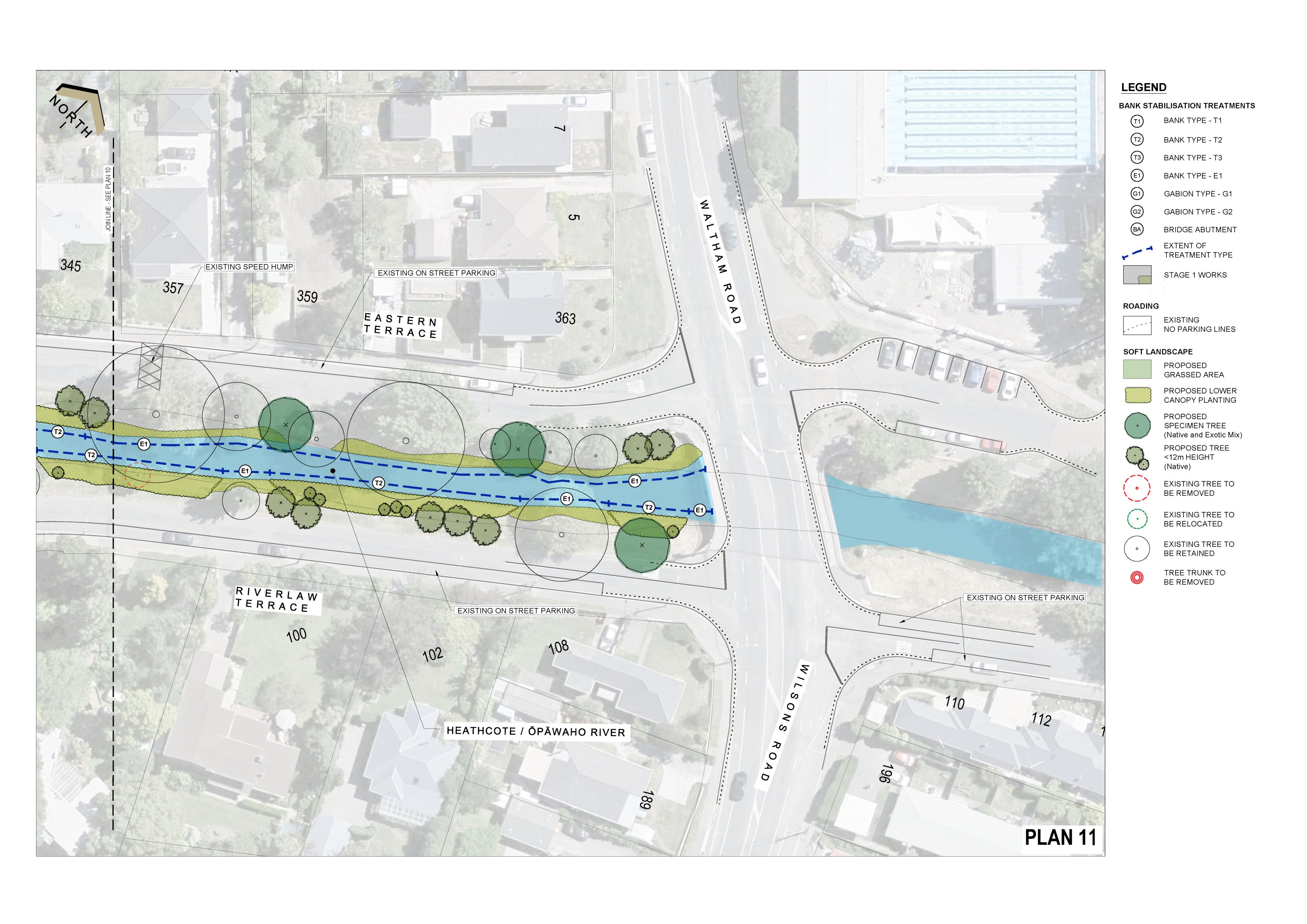The stabilisation works need to ensure that the drainage function of the river is improved (through additional capacity and preventing further slumping), while also ensuring that cultural, recreational, ecological, landscape and heritage values are taken into consideration. Therefore, wherever possible, waterway area has been increased by widening the channel. This enables bank stabilisation through a ‘naturalised’ bank profile (rather than hard engineering structures), and increases the capacity of the river. The work will be in keeping with the Mid Heathcote/Ōpāwaho Linear Park Masterplan, which was approved in 2009.
Different types of bank instability require different methods to address the issue. The different designs to be used along the waterway are described in detail in pages 12 to 20, and these designs are then referenced on each plan. To see what is in your area you will need to refer first to the plan, and then look for the detailed description and cross-section of each design type.
The different design types, and length of each type in Stage 2, are:
| Design Type | Length (metres) |
| Bank Type - T1 | 300 |
| Bank Type - T2 | 220 |
| Bank Type - T3 | 220 |
| Edge Type - E1 | 920 |
| Gabion Type - G1 | 65 |
There are a number of common features throughout most designs:
- Preserving trees where possible
- a key trigger of bank instability is erosion and undercutting of the bank toe. To address this instability, a rock edge is proposed in most places
- crevasses and undercutting, while being bad for bank stability, provide habitat for aquatic life. To provide a partial replacement of this habitat, small pipes are proposed within the rock edge, along with planting above the rock edge
- slumping caused by over steepened banks is generally addressed by cutting back the banks to achieve a stable profile. This increases the waterway area of the river, improving the flow
- plantings along the river edge protect the bank to prevent further slumping
- where space is constrained then additional stability works are required, either through a second layer of rocks as a low wall, or in a few limited areas by constructing gabions.
In some areas it is proposed to narrow the road and removesome bankside carparks. This allows drainage capacity to be increased, setting aside space for footpaths and still considering the other community values.



